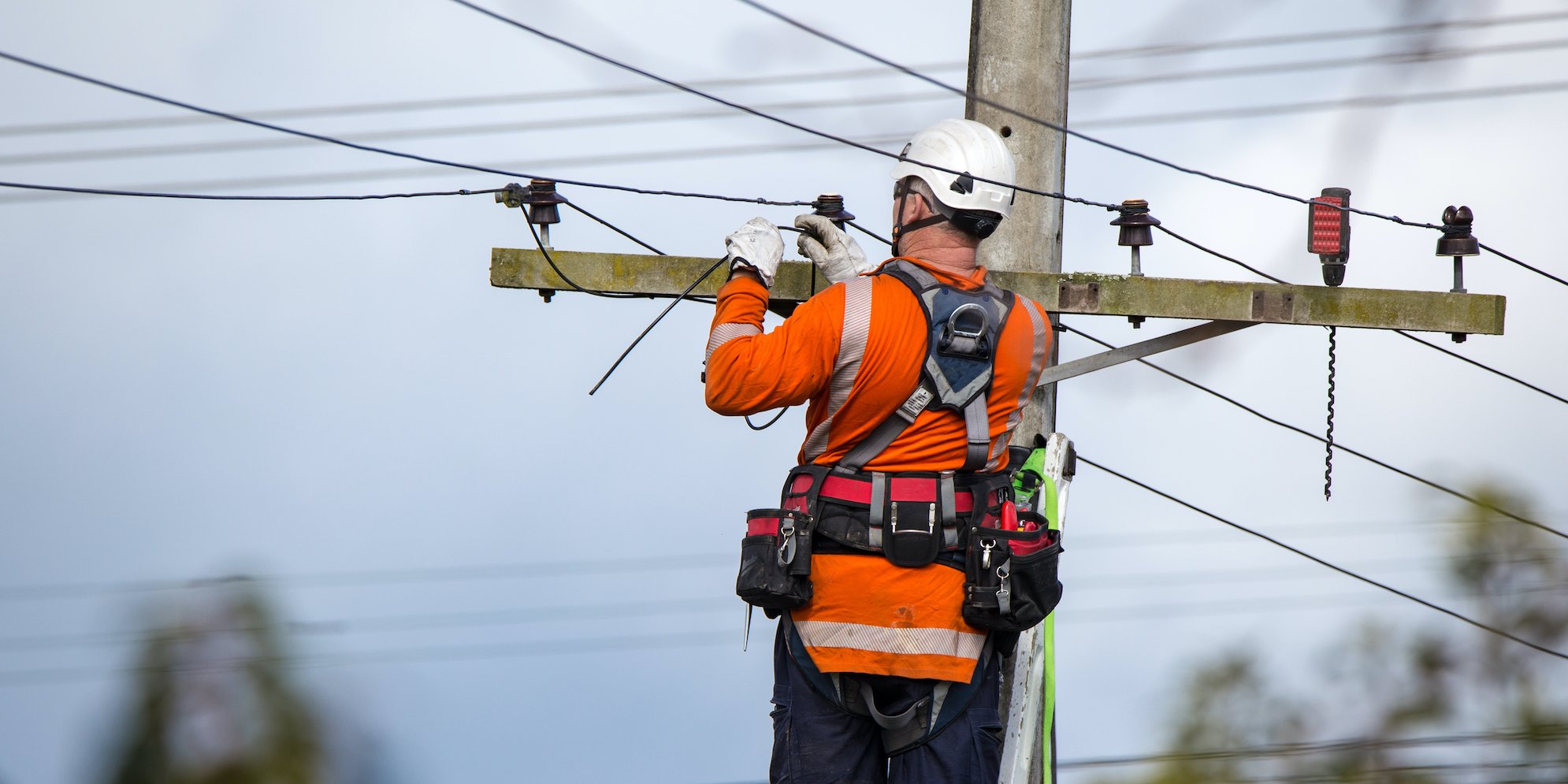Utility locators play a vital role in critical infrastructure protection. Without locators, excavators would not know the location of underground utilities, jeopardizing their safety and the safety of the larger community.
Ironically, utility locating has hazards of its own. This Locator Safety and Appreciation Week, remind your locating partners to keep an eye out for these common safety threats.
Top safety hazards for utility locators
1. Time on the road
Working as a utility locator requires traveling to multiple job sites in a single day. Unfortunately, long hours on the road increase the chances of being involved in a transportation incident.
Although it’s not possible to completely eliminate this safety hazard, utility locators can protect themselves by mapping out the most efficient routes from one site to the other. Additionally, they should avoid distractions (like talking or texting on the phone), and they should not drive when they feel overly tired.
Employers can also help protect utility locators from transportation incidents by limiting both the number of hours they’re on the road and the miles they cover each shift.
You might like: 7 Ways to be More Proactive About Worker Safety
2. Climate and weather
Working outside is a perk for many utility locators, but it also puts them at the mercy of the elements. Both hot and cold conditions can be dangerous, so utility locators should be well versed in how to protect themselves.
When working in hot, sunny conditions, utility locators should wear a wide-brimmed hat, sunscreen, and a breathable long-sleeved shirt. They should also take plenty of breaks to hydrate.
In colder temperatures, utility locators should dress in layers and have extra clothing on hand, as staying dry can help prevent hypothermia and frostbite, as well as other dangerous medical conditions.
Look: Winter Safety Tips to Prevent Workplace Accidents and Injuries
3. Walking, lifting, bending, and squatting
Utility locating isn’t always easy on the body. When out in the field, back injuries caused by walking, lifting, bending, and squatting happen more often than you might realize.
The best way for utility locators to protect themselves from injuries associated with these activities is to know the correct way to carry heavy objects. For example, knowing how much they can safely lift, stretching beforehand, and practicing proper lifting techniques can prevent injury.
4. Slips, trips, and falls
Slips, trips, and falls are consistently among the top events for fatal and nonfatal injuries across occupations. To prevent incidents, utility locators should always survey a job site for potential hazards. It’s also important for them to follow safe walking practices, wear appropriate footwear, and learn to fall properly, according to the Occupational Health and Safety Administration (OSHA).
Related: Preventing Fatal Falls in Construction
5. Punctures and foot trauma
Providing critical infrastructure protection can put utility locators’ feet in harm’s way. Things like loose nails, sharp metal, and glass objects on job sites can easily puncture the foot. Poor lighting, improper footwear, and slippery surfaces can also cause accidents that lead to a broken or fractured foot.
According to OSHA, workers in danger of foot injuries due to a variety of risks—i.e., objects piercing the sole, falling or rolling objects, electrical hazards—should wear protective footwear.
6. Confined space
Underground utility locators sometimes have to work in confined spaces (tight areas that typically have limited options for entry and exit). The most common type of confined space that utility locators encounter are manholes, which are dangerous because they can be filled with noxious gasses.
The best way to protect utility locators from this safety hazard is to ensure they have proper training and to perform atmospheric testing. Testing reveals whether a space is safe to enter and whether additional precautions (i.e., PPE) are necessary for safe work. Continuous gas level monitoring is also crucial to keep utility workers safe when working in confined spaces.
Check out: 3 Ways to Improve Utility Worker Safety
7. Poison ivy and other skin threats
Underground utilities aren’t always located in a convenient place. Sometimes utility locators must trudge through pesky and dangerous vegetation to get the job done.
Utility locators can protect themselves from this safety risk by being able to identify poison ivy and other types of vegetation that can cause illness or injury. Of course, it’s not always possible to spot these plants in advance, so they should also know the signs of a skin threat and what to do if they believe they’re suffering from one.
Also see: What is a Good Total Recordable Incident Rate?
8. Threats to the eye
Utility locators can be exposed to chemical gasses or vapors, so proper eye protection is imperative. Well-fitting eye protection such as safety spectacles or goggles safeguards them from any hazards present on the jobsite.
9. Dog bites
Unfortunately, utility locators are at risk of dog attacks when in the field, so they must know what to do to protect themselves.
When visiting a residential property, they should give advance notice to the resident in order to find out if any dogs are on the property. If there are, they should be restrained while the utility locator is present.
Advance notice isn’t always possible, so it’s also advisable for utility locators to equip themselves with pop-up dog barriers or dog attack spray, which they can use if they’re faced with aggressive animals.
10. Insect bites and stings
Insect bites and stings are another hazard associated with working outdoors. In most cases, this won’t cause major harm, but utility locators should know whether they are prone to a severe allergic reaction (i.e., a bee sting can cause anaphylaxis in a small percentage of people). If they are, they should have an EpiPen on hand at all times.
Utility locating, by and large, is not a dangerous job. But, that doesn’t mean utility locators aren’t susceptible to injury. Utility locators can keep themselves safe by knowing the hazards they face each day and taking the proper precautions to mitigate those hazards.
Up next: 5 Reasons Your Safety Incident Rates Aren't Declining

